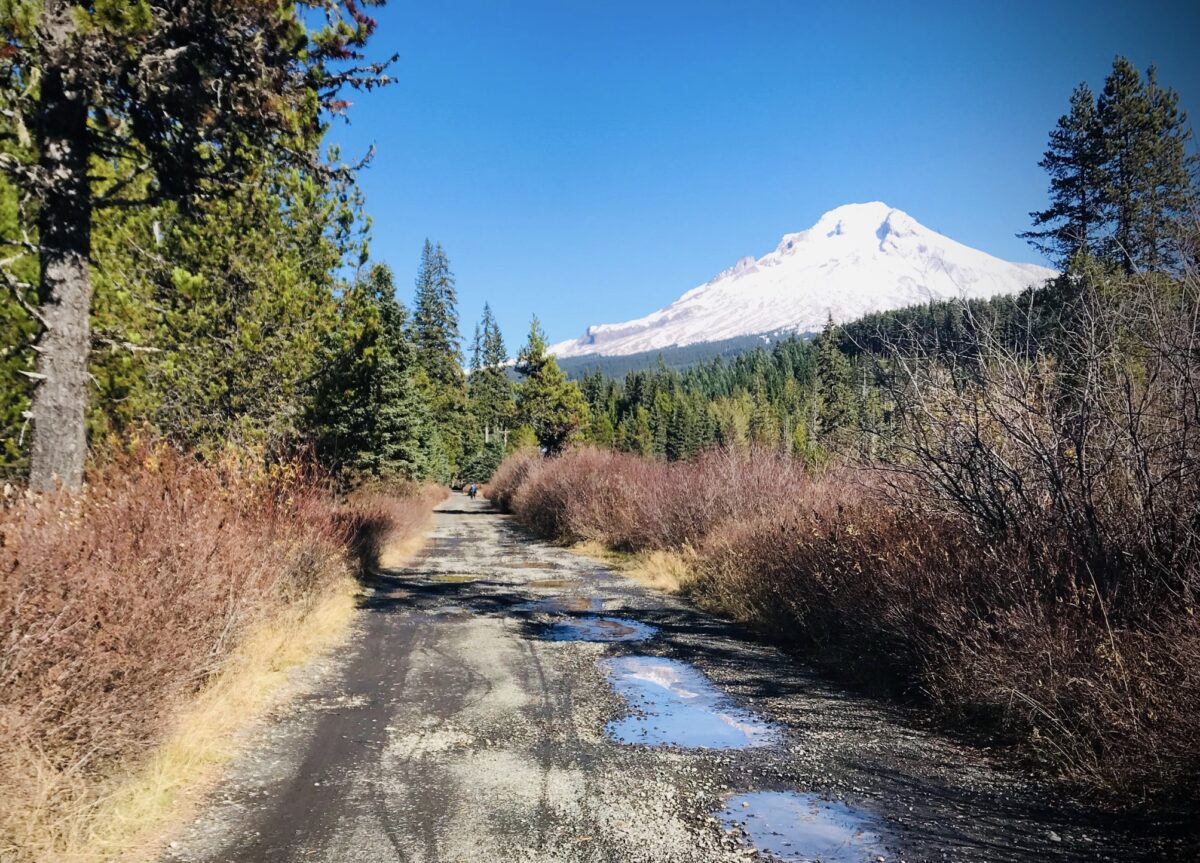
(Photo: Jonathan Maus/BikePortland)
Congressman Earl Blumenauer, the former Portland city commissioner who founded the Congressional Bike Caucus, is mostly known for his work on urban bike infrastructure and commuting. Now his iconic bike pins might need to be retrofitted with knobby tires.
“A huge win for mountain biking.”
— Nate Kuder, Oregon Mountain Biking Coalition
On Monday, Blumenauer introduced the Mt. Hood and Columbia River Gorge Recreation Enhancement and Conservation (REC) Act (H.R. 7665). At a hearing for the bill Wednesday at the Committee on Natural Resources Subcommittee on National Parks, Forests, and Public Lands, Blumenauer said these iconic areas are “being loved to death.” “There are over eight million people within a four hour drive. The pandemic has put a great deal of stress on them,” he said.
Blumenauer’s bill does three main things: It vastly increase the acreage of land surrounding Mt. Hood designated as National Recreation Area to 350,000 acres, making it the sixth largest in the nation; it creates a first-ever co-management plan with Confederated Tribes of the Warm Springs (to “improve their ability to exercise treaty rights” after “167 years of broken promises,” Blumenauer says); and it requires a sustainable recreation management plan for the Columbia River Gorge National Scenic Area.
The bill also includes $17.5 million in recreation planning so it’s far from an unfunded mandate.
Advertisement
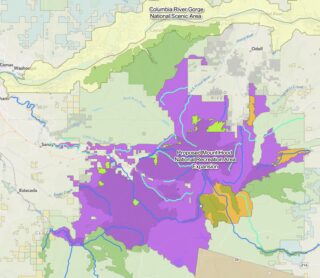
The nonprofit Oregon Mountain Biking Coalition (OMBC) lobbied hard for the bill and is in full support of it because the Recreation Area designation and the limited expansion of Wilderness Area (just 7,500 acres) means no existing mountain bike trails were lost. “The way this bill is specifically written to address non-motorized recreation and mountain biking in particular, really benefits us greatly,” said OMBC Board Chair Nate Kuder in an interview yesterday. “It requires the Forest Service to prioritize non-motorized outdoor recreation in their forest plan.”
Kuder also said much of the land around Mt. Hood have already been logged and/or are in need of major fire suppression projects. But once land is designated wilderness, the Forest Service can’t use power tools to clear overgrowth. Given the rise of massive wildfires, that’s probably a big reason Blumenauer added just 7,500 new acres of it.
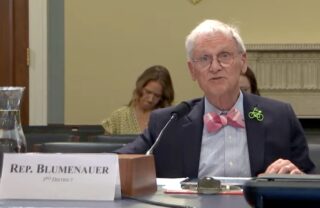
It’s a decision that has led to opposition of this bill by Oregon Wild, a nonprofit that wanted Blumenauer to add 178,000 new acres of wilderness. In a statement, Oregon Wild said they are concerned the lack of wilderness acreage will lead to more logging and won’t lead to enough protection. But many other environmental groups support the bill, including: Bark, American Whitewater, Outdoor Alliance, Pacific Crest Trail Association, Sustainable Northwest and other.
Advertisement
Another way a larger recreation overlay will impact cycling has to do with fire-related road and trail closures. When fires rip through wilderness areas, public access is closed for a long time because of legal limitations about human and machine interventions in wilderness areas. With a more recreation-centric planning approach, forest lands will reopen much sooner after fire damage.
The new Recreation Area designation will also unlock millions of federal dollars for future trail and trailhead projects. With the pandemic boom in outdoor recreation, much of the federal funding to support it are only available to areas with the National Recreation Area designation. “Having access to additional funding to build trails, to build infrastructure, trailheads and parking lots and things like that, is a huge win for mountain biking,” Kuder said.
Kuder is also a volunteer with 44 Trails Association. He says currently only one-third of the land they help maintain is in a Recreation zone. If this bill passes, all of it will be. He says the bill guarantees more bike trails in the future.
On the Columbia River side, the bill will also hasten the move toward fewer cars in the Gorge. There’s been a movement toward reducing car trips in the Gorge spearheaded by ODOT and transit providers (one of whom, Columbia Area Transit, supports the bill). But their progress has been limited in part by complex overlapping jurisdictions and more conservative partners like the US Forest Service. The REC Act requires a sustainable recreation management plan for the Columbia River Gorge National Scenic Area, “with considerations for socially, economically, and ecologically sustainable recreation, recreation planning, and recreation infrastructure.”
The bill also calls for the creation of two Access Committees, one for the Gorge and one for Mt. Hood, that will create plans for more “ecologically sustainable access” and to, “prioritize reliable and user-friendly transportation and transit options.”
Learn more about the bill and find the online comment portal here.



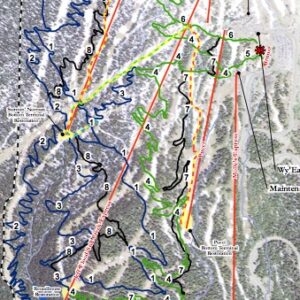


Thanks for reading.
BikePortland has served this community with independent community journalism since 2005. We rely on subscriptions from readers like you to survive. Your financial support is vital in keeping this valuable resource alive and well.
Please subscribe today to strengthen and expand our work.
To be clear — this is exactly how to dramatically increase driving to wilderness areas and add to massive traffic jams far from population centers. People get to foot and cycling trails by motor vehicle. The trails themselves as well and the people on them impose significant impacts as well as changing the fundamental character of these areas.
Bringing masses of people into wilderness areas transforms these places to parks. Not really a good thing in my mind, but I see it as inevitable.
Or we could bury our heads in the sand and let folks park along the highway and not be able to access certain places and so on.
I think there’s a big difference between the scenario you want to paint in your comment and having the funds and the permission to make places where people can safely park their cars. No one is going to make a Walmart up there.
Kyle, I am trying to figure out what is happening in your photo. What is that a photo of?
He paddled to the sea and back. Did NOT drive there.
I share that mindset for a lot of areas and find it interesting the very thing that attracts people to a place does not hold their attention. A person can no longer simply go to a place just to enjoy it as a place – they have to have something there to do; a destination activity and often one that negatively impacts the place or even flies in the face of their stated conservation values.
We need to be careful about what’s made accessible — having people anywhere messes things up. The animals leave. If there are any left and they get into conflicts with humans, they’re removed/killed.
Outlets need to be provided. If they aren’t, people go out anyway and cause all sorts of problems. Though they won’t get far with no trails in rugged terrain, particularly without actual skills.
The lion’s share of outdoor recreation treats nature like an amusement park. As such, the need is to provide areas where people can do this — very different than opening up more and more until there’s not really any nature left. There just need to be enough outlets, and they don’t need to be everywhere.
In any case, I find it strange that a forum consistently against people driving to work (necessary to get food and housing) would encourage recreation that requires more driving for a single day of fun than a week’s worth of work.
@Brian That photo was foam in the water when I was paddling off the coast on a 15′ day. My kayak’s buried in the foam, and I’m just resting after having paddled in. Here’s a shot where the foam hadn’t blown in from the same trip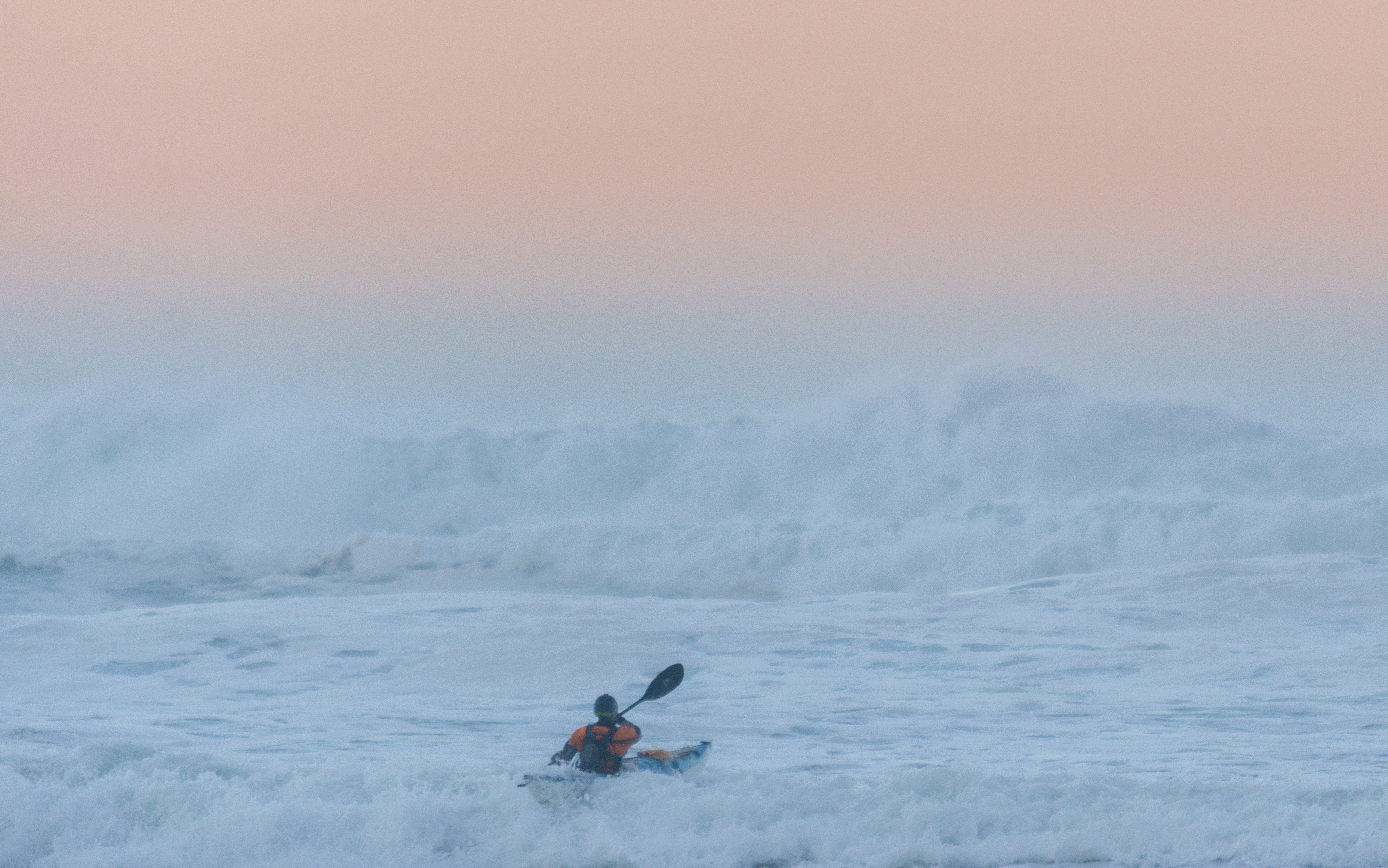
“In any case, I find it strange that a forum consistently against people driving to work (necessary to get food and housing) would encourage recreation that requires more driving for a single day of fun than a week’s worth of work.”
Comment of the year, maybe century?
What, you mean I shouldn’t drive my 40 year old JDM Toyota camper with a carburetor 150 miles from my house to my OMTM ride just to show off my 4th bike in 3 years made with plastic from China, carrying my pocket computer made by children in China to document the ride on an app owned by Meta, and then hurry home to lecture people on BP about how they just need to have more compassion and how real global warming is?
We’re all hypocrites, some of us are just able to see it easier.
Good. A possible step towards my ultimate dream: to load my bike on a train & ride that baby to the gorge
I feel the exact same way for access to Government Camp; there should be a train. People could then have easy access to lift assisted riding at Skibowl and Timberline or be shuttled further afield. Thus concentrating human recreation around a town that already has services, providing an alternative to driving, and encouraging an option that does not result in the entire wilderness area full of humans each weekend.
Didn’t one of those resorts just shut down its mountain biking due to a personal injury verdict?
> 10 million for crashing on a maintained trail. Obviously the fault of the maintainers. Seems like a case for non maintained trails, but those have trees, washouts, etc. Which causes fewer people to try to ride them. Oh darn…
The suit and the settlement was for placement and type of signs along the trail, not for trail maintenance.
Megan Ramey in Hood River does a lot of commuting by bus and light rail to bike events in Portland. She takes the CAT bus (and maybe even got them to add bike racks? something like that). Here’s a Sprocket Podcast conversation where she talks about how she does it all without a car.
I completely disagree that decimating the proposed new wilderness acreage should somehow be seen as a “win.” This is not a zero-sum game: it’s possible to both add major new wilderness acreage AND dramatically increase the size of the National Recreation Area for bikers. Nat’l Rec. Area land has far less stringent protection but is valuable too.
There are priceless hiking-only destinations in the Mt. Hood area (e.g. Tamanawas Falls) that have been removed by Blumenauer from the proposed wilderness protections in the REC Act, and now they will remain vulnerable to increasingly aggressive Forest Service logging. Nobody wins from that except logging corporations.
I really hate that you’ve decided to write this piece with a “wilderness bad for bikers” frame. That’s divisive and unnecessary. We need much more land that is completely off-limits to development and to motorized access, AND much more land that is protected from development but open to mountain bikes and other non-destructive uses.
We’ve all seen the bait and switch from environmental groups around we want more trails, they just have to be the right trails. This article makes me consider supporting this but my initial instinct was complete opposition to any increase in wilderness areas because of the way that some groups are using them to lock out access.
Bjorn: “Locking out access” to whom? The Wilderness Act of 1964 is an absolutely vital cornerstone of land protection in the US. It explicitly excludes motorized users from designated wilderness–as it should. Wilderness values are incompatible with trucks, motorbikes, and ATVs.
The Wilderness Act of 1964, which predates mountain bikes, excludes “mechanized” travel. Unfortunately, that lumps people on bicycles into the same category as 4WD SUV’s.
I mean, wilderness areas ban bikes, so yes, they are bad for bikers. That doesn’t mean we shouldn’t add more of them, but your framing is this is disingenuous.
Nice, looking forward to folks being able to spread out a bit more. Outdoor recreation is really important for many people’s mental health, including my own, and packed Gorge hike parking lots can be pretty stressful. I definitely love all my bike riding from my doorstep, but it’s not something I can do with the rest of my family as of yet.
Buried in the submitted bill 7665 is the start of creating a regional Gorge-wide transportation plan. You are already seeing the mini-transit pilot program started last Aug and continuing as I write in providing an attempt to reduce traffic on Historic Columbia River Highway waterfall corridor. In section title V (5) -sec 501 -is the infant ‘modernizing transit and transportation.’ This is something several of us have been lobbying for the past 3 years, esp. after the Eagle Creek fire. We have very large needs of people to help by bringing together the Gorge as a transit region. For example, the high number of people using the Veteran’s medical facilities and Portland medical resources, people using the airport, the change of workplace to home secondary to the past two years of the pandemic, the exodus of people moving away from the inner metro (demonstrated by the outside of Portland faster turnover of real estate the past six months)…the list goes on about the increasing dynamics of our transportation needs along the Columbia.
We need advocates to play a role here. And the great thing is there is language in this initial bill submission that overtly states: “Five representatives from tourism, recreation, bicycle or pedestrian groups, conservation, and urban and rural communities within the Area, in6cluding tourism alliances, economic development districts, and non-profit organizations (including orga8nizations focused on environmental and transportation justice).”
How often do you see this in a Federal Bill? How often do we have a Representative in the US that supports our cycling passions and participation to be at the Table?
Consider getting to know the people on the Gorge Commission. Consider joining the Friends of the Gorge. Consider joining the Friends of the Historic Columbia River Highway. Consider joining the Columbia RiverKeepers. Consider joining Trailkeepers of Oregon. Consider joining the Washington Trails Association…the list is numerous. There are many more advocates groups that need participation and dollars.
And lastly, thank Rep Earle Blumenauer and his staff for incubating this bill that includes us cyclists. It is an opportunity not to be squandered without voices, participation and money. ~AJZ
sounds like theres a planned fire in here somewhere.
Interesting that Oregon Wild and Bark, both groups that I support and seemingly of similar viewpoints, are on opposite sides here.